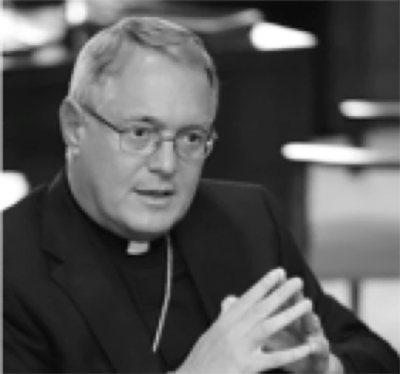EXCLUSIVE: New Documents Show Diocese Is Freezing Benefits For Many Teachers and Staff
Tuesday, August 14, 2018
GoLocal has secured copies of Diocese of Providence documents that show that the benefits of many teachers and staff in Lay Employees Retirement Fund will be frozen and for others, they will no longer be eligible for the “Lay Teacher’s Retirement Fund” at the end of the year.
The implications are profound, as potentially thousands of Catholic school teachers and staff will lose the contributions to the pension fund. They will receive nothing.
Questions persist about the overall financial health of the fund. In June, GoLocal unveiled Diocesan documents that showed that the pension fund for a large number of teachers and staff at Catholic schools in Rhode Island is economically unstable.
GET THE LATEST BREAKING NEWS HERE -- SIGN UP FOR GOLOCAL FREE DAILY EBLAST“The unfunded liability of the Lay Employees’ Retirement Plan will continue to grow and will become untenable in the near future,” stated the previously disclosed Diocesan document.
The document, entitled, “Recommendation of Finance Council Subcommittee Regarding the Law Employees’ Retirement Plan," dated October 2017, painted a bleak future for the fund, outlines the causes of the fund’s tenuous structure, and calls for immediate action to stabilize the fund.
The Diocese refused to respond to questions.
The new documents secured by GoLocal show that “As a result of this review, a decision was made that the Lay Employees' Retirement Plan will be ‘frozen’ effective December 31, 2018. A ‘freeze’ is not the same as a termination; generally, a ‘freeze’ means that no new employees can join the Plan, and that benefits will be fixed, and will not grow, after the ‘freeze.’”
In addition, the document states:
Participant: Current Employee (Vested on or before 12/31/18)
The benefits you earned through 12/31/18 remain unchanged, but you will earn no more accruals or additions to your account after 12/31/18.
Participant: Current Employee (Unvested as of 12/31/18)
If you continue to work for a participating employer and complete the 10-year vesting period, any benefits you earned through 12/31/18 will be vested.
If you leave employment before you reach the 10-year vesting period, you will forfeit all benefits under the Plan.
The Diocese is planning on holding a series of briefings for members of the retirement fund.
Unfortunately, the Diocese has refused to disclose the financial condition of the fund. As the retirement is a “Church Plan” it is exempt from federal and state disclosure requirements.
Diocese documents secured in June by GoLocal, the long-term future of the fund is unstable, "Even with the revised more realistic assumptions, if we make these changes, it will still take 30-35 years to fully fund the Plan."
Trouble for Diocesan Lay Employees’ Retirement Plan Cropped Up in 2009
There have been early signs of trouble dating back to 2010. GoLocal reported in September of 2017:
According to a 2009 article in the Diocese of Providence’s newspaper, Rhode Island Catholic, the Lay Employees’ Retirement Plan was in distress and the benefits payouts were being cut back.
The then-administrative secretary to the Lay Employees’ fund, J. Timothy Kocab, administrative secretary of the Lay Employees’ Retirement Board said, “The plan’s assets…have declined significantly in value during the past several months.”
In addition, Kocab is quoted as saying, "These are necessary steps in order for us to refocus our resources on strengthening the funding position of the Lay Employees’ Retirement Plan.”
Kocab told Diocesan employees in a letter, "Your employer remains committed to helping you build financial security for your retirement years.”
In September, the Diocese fiscal office refused to answer questions about the St. Joseph pension fund bankruptcy, the Lay Employees’ Retirement Fund, or any other church funds associated with the Diocese of Providence.
According to the Diocese’s website, the fiscal office was “established in 1973 to assist the Roman Catholic Bishop of Providence and related Diocesan Corporations in their administration of the temporal resources of the Church, the Fiscal Office operates in a multi-corporate environment and is responsible for the day to day activity of some 30 separate internal corporations.”
The collapse of St. Joseph Health Services Pension Fund
Also in June, two related massive lawsuits were filed simultaneously in state and federal court by the receiver in the collapsed St. Joseph pension fund - the largest pension failure in Rhode Island history.
The suit alleges massive fraud in the case which has created a hole in pension assets estimated to be in excess of $115 million. The suit was filed by the receiver Stephen Del Sesto and was prepared by the special investigator Max Wistow and his law associates Stephen Sheehan and Benjamin Ledsham.
The Federal Court complaint is 136 pages and includes a 21 count complaint filed against 14 Defendants. Similarly, the state court complaint is 101 pages and includes 16 count complaint against same defendants.
Related Slideshow: 10 Shocking Elements of the St. Joseph Pension Fund Lawsuit Against the Diocese and Others
Related Articles
- EXCLUSIVE: Diocese of Providence’s Teachers & Staff Pension Fund Faces Failure, May Impact Thousands
- Investigation: Diocese Claims False - Board Directed Only $14M in Payment to St. Joseph Pension Fund
- Diocese Fights to Quash Subpoena for St. Joseph Pension Fund, Wistow Fires Back
- Diocese of Providence Issues Statement in Response to Fraud Lawsuit
- Diocese Admits Teachers’ Retirement Fund in Distress, Blames Individuals Who Unveiled Key Documents
- Could Diocese of Providence Declare Bankruptcy — Now Facing Exposure to Tens of Millions
- 10 Shocking Elements of the St. Joseph Pension Fund Lawsuit Against the Diocese and Others
- Diocese, Kilmartin’s Legal Delays Are Increasing Costs to Recover Monies For St. Joseph Pension
- NEW: Providence Diocese Suspends Priest for Sexual Misconduct
- St. George’s Taps PR Firm Tied to Boston Diocese’s Effort to Avoid Paying Abuse Victims
- INVESTIGATION: Diocese Underfunded St. Joseph Pension Fund by $100 Million
- Judge Stern Orders Diocese to Expedite Production of Documents to Special Investigator
- St. Joseph Bankruptcy: Diocese Failed to Make Contributions to Employees Pension Fund for Years
- Former AG Violet Talks Says Diocese Treatment of Retirees is Outrageous
- Diocese, RWMC and CharterCARE All Failed to Make Millions in Pension Payments to St. Joseph
- RI Center for Freedom’s Katz to Receive “Lumen Gentium” Award from Diocese of Providence
- Diocese of Providence Bans Rev. Turillo Following Allegations of Misconduct
- Coming Monday - INVESTIGATION: The Real Cost of the St. Joseph Pension Fund Collapse
- Key Trust Document Shows Bishop of Providence Has Oversight of Failed St. Joseph Pension Fund
- LIVE: Whitcomb on Al Franken’s Demise, St. Joseph’s Pension Debacle, and More
- Kilmartin Knew of St. Joseph’s Pension Collapse 10 Days Before Failure
- Judge Slams Kilmartin for Delaying Release of Documents in St. Joseph Pension Fund Collapse
- St. Joseph Pensioner Quinn Worked 34-Years and Now Facing Cuts to Her $500 a Month Payment
- Callaci: Memorial Hospital’s Closure & St. Joseph Pension Failure Show State of Healthcare
- Kilmartin Tries to Block Release of Records in St. Joseph Pension Fund Collapse
- Judge Stern Shoots Down Prospect and Attorney General in St. Joseph Pension Fund Collapse
- DelSesto, Receiver for Failed St. Joseph Pension Fund, Unveils Next Steps in Investigation
- Massive Lawsuits: Lawyers for Failed St. Joseph Pension Fund Sue Catholic Church and CharterCare
- UNAP Issues Statement Following Lawsuit Filed in St. Joseph’s Pension Collapse
- 900K+ Documents Reviewed in Filing Lawsuits, Says St. Joseph Pension Fund Receiver Del Sesto on LIVE
- Raimondo Signs Bills to Help Settle Lawsuits in St. Joseph’s Pension Collapse
- St. Joseph Pension Plan, UHIP Progress & More: This Week at the State House
- 6 Months After The Biggest Pension Collapse in RI - What is the Status of St. Joseph’s Fund?
- Subpoena Issued to RI Foundation on $8.2M Questionable Gift Tied to St. Joseph Pension Fund Collapse
- Feds Issue Subpoenas on St. Joseph Pension Fund Collapse
- Senate Passes Bill Encouraging Settlements in St. Joseph Pension Fund Collapse
- RI Foundation’s Lawyer Delays Agreement on Preservation of $8.8M in Charitable Assets in St. Joseph

























